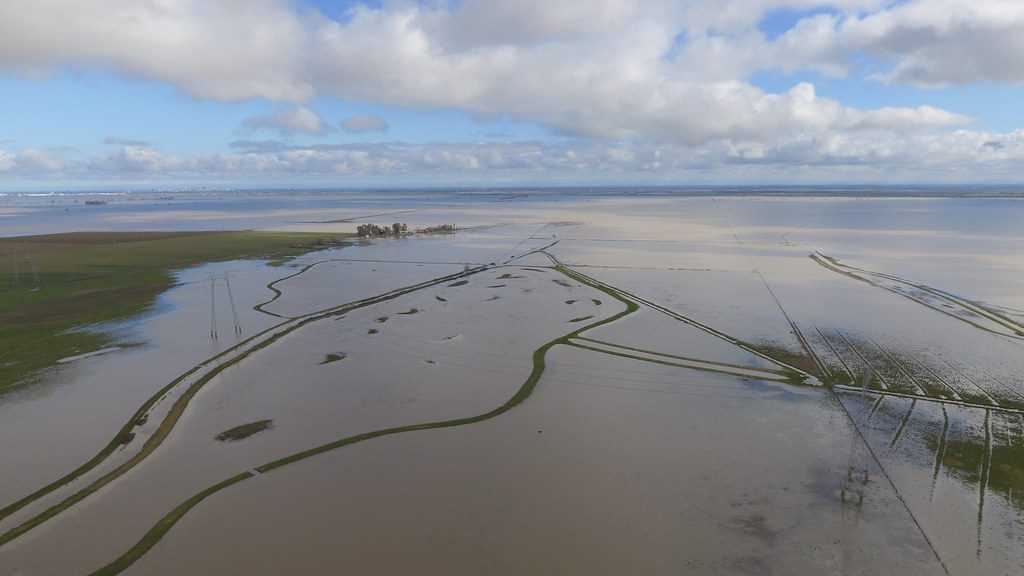Monday April 20, 2020

Many environments are becoming increasingly fragmented by human development, but addressing this issue is more complicated than simply reconnecting all the habitat pieces. Ecological connectivity, or the degree to which living things and ecological processes can move through an ecosystem, may be thought of as a “Goldilocks” issue: too much or too little can both have negative consequences. The struggle to balance on the razor’s edge of healthy connectivity was highlighted at the recent Estuarine Connectivity Symposium held at UC Davis on February 18, 2020. The research presented made it clear that fostering resilient ecosystems requires careful thought about restoring and maintaining connectivity.
In rivers, ecological connectivity is four-dimensional. These dimensions include longitudinal connectivity from headwaters to the ocean, lateral connectivity between a river and its floodplain, vertical connectivity between groundwater and surface water, and temporal connectivity across seasons and years. For fish like Chinook salmon (Oncorhynchus tshawytscha), longitudinal connectivity is vital because their life cycle requires movement between upstream tributaries and the ocean. This has become a major challenge for winter-run Chinook, which have been cut off from their cold-water spawning habitat by dams. Restoring connectivity in this setting is an ongoing issue, and John Ambrose of NOAA presented on a proposed plan to trap and haul fish around Shasta Dam. Beyond dams, NOAA researcher Cyril Michel described studies indicating that high levels of predation can also sever longitudinal connectivity along salmon migration corridors. Similarly, loss of lateral connectivity can have major detrimental effects, as shown in studies by UC Davis researcher Anna Sturrock who described how decreased floodplain connectivity reduces growth and survival of juvenile fall-run Chinook. Importantly, it isn’t just salmon that are impacted by a loss of connectivity. UC Davis researcher Denise Colombano presented her studies showing that many Delta fish species rely on connectivity to move between different habitats at different life stages.
The symposium also covered the negative impacts of too much connectivity. Marissa Baskett of UC Davis presented a model based on fall-run Chinook data, demonstrating how trucking of hatchery fish and associated straying of returning adults increases the connectivity of the entire Central Valley population. This not only genetically homogenizes populations spawning in different rivers, but also increases the chances that a single disturbance could affect the entire population in the same way. Increasing the physical connectivity of rivers with canals can also cause problems, such as the rapid spread of invasive species. Valerie Cook of the California Department of Fish and Wildlife described how this has been the case for nutria (Myocastor coypus) in the Delta. Additionally, increased connectivity of water sources can lead to toxicological impacts, as USGS researcher Robin Stewart showed in the form of increased spinal deformities in Sacramento splittail (Pogonichthys macrolepidotus), which she hypothesizes are a result of increased selenium uptake due to connectivity and mixing of source waters.
Taken together, this information raises the question of how to balance the need for increased connectivity with potential risks. Several presentations focused on how connectivity restoration efforts may be guided by science. UC Davis researcher Patrick Huber provided an overview of habitat mapping and modeling to find the best routes to connect habitats, including the Essential Habitat Connectivity and Areas of Conservation Emphasis projects. In addition to these efforts, John Gallo of the Conservation Biology Institute presented a mapping tool that identifies high priority places to maximize connectivity. Washington State University researcher Alexander Fermier also showed how mapping both ecological and regulatory landscapes can reveal opportunities for improving connectivity along riparian corridors. To conclude the symposium, Mathias Kondolf of UC Berkeley discussed the importance of restoring hydrologic processes to regain longitudinal, lateral, and vertical connectivity in river systems, noting that any efforts that fail to address the root causes of reduced connectivity will provide little benefit. Ecological resilience, or an ecosystem’s ability to return to a stable state following a disturbance, depends on connectivity of both ecosystem processes and habitats. Restoring this connectivity is essential but must be carefully guided by science – sometimes opening a door in the wrong place may do more harm than good.
This post featured in our weekly e-newsletter, the Fish Report. You can subscribe to the Fish Report here.
